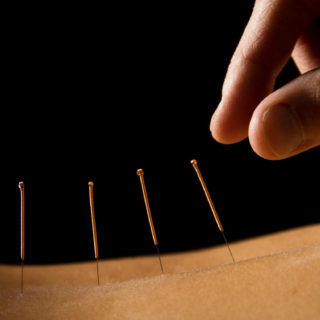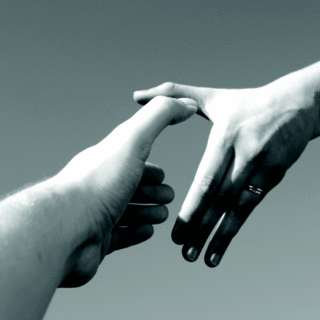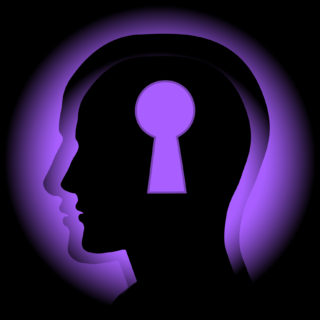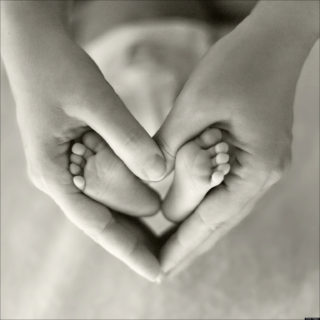Autism – How Shiatsu Can Help
A Therapist’s Journal
Even though more and more children are diagnosed with ASD (autism spectrum disorders) (1) and Shiatsu shows beneficial effects, it is still hard to find more data. Therefore I like to share my observations to increase the amount of information available and stimulate more discussion.
My client which I will call Lynn is 19 years of age and was diagnosed with autism from early childhood. Over a period of five months, I saw her almost weekly for a 30 min. Shiatsu Therapy sessions. The initial reasons for her visits were that her parents were hoping for an improvement of her posture and a reduction of tension in legs and back. Furthermore they also mentioned her inability to express herself and their concern over it affecting her emotional wellbeing, her moodiness and wetting her bed at night.
Her symptoms were not unusual for a person suffering from Autism. According to a study conducted in 2000 Children with Asperger syndrome or Autism are more likely to have mood and anxiety problems than the general population. Especially anxiety has a significant impact on their overall adaptation (2). Toileting and being dry at night are common challenges for children with Autism and their parents (3). From a Shiatsu Therapy perspective both, anxiety and toileting are strongly associated with the Bladder and Kidney Meridians. Parent or caregivers may notice a lot of tension along the neck, back, sacrum and calves of the Autistic individual. This is roughly where both meridians are located. From a Shiatsu perspective the kidney Qi was weakened, the bladder meridian “alarmed” and tight.
Considering her body state, it was easy to see why she was easily distracted. I theorized that she didn’t feel safe and thus felt anxious. This kind of restlessness is associated with the stomach and spleen meridian. If those two are out of balance, cravings for sweets are very common as well as tension in the body front and restless eyes. These were also symptoms that Lynn suffered from.
Firstly, I thought it important to have a calm environment. After a few sessions, it was clear that Lynn felt more comfortable when only one parent was in the room, ideally not paying too much attention to what was going on – reading a book while the session was going on.
Furthermore we found music to be too much of a distraction. Most importantly, the therapist must stay calm and relaxed. The fact that it is hard for Lynn to express herself, including her feelings, did not change the fact that she was sensitive. The more relaxed her father (who accompanied her every time) and I were, the more relaxed was she and the better we could concentrate on the Shiatsu treatment.
There has been much written about the importance of the emotional state of parents of Autistic children and its’ affects. Recognizing some of the common emotions parent’s feel such as “stress, fear, denial, anxiety, confusion, anger, depression, and sadness”(4). Knowing this, I encouraged Lynn’s father to have regular Shiatsu treatments for himself on another day. The improvement to his mood and his own physical state was extremely noticeable and the benefits carried over to the rest of his family.
Lynn’s moodiness was observed by her parents to increase around the time of her menses. From what I could see, her meridian system touched similar to a woman suffering from pain during the first days of her menstruation. Thus especially her liver meridian showed a lot of tension. An imbalanced liver meridian is also associated with anger, frustration and moodiness.
Treatments and the process:
During the first sessions I concentrated on making Lynn feel comfortable. I experienced working with her hands as an easy way of “introducing myself and Shiatsu” to her. As soon as she was ready I stared working in side position on her liver meridian in order to help the Qi move freely (another thing the liver meridian is responsible for), her bladder meridian, her stomach meridian and Ampuku (abdominal massage).Her liver meridian and especially her bladder meridian relaxed. That led to the need for 3 toilet breaks in one session.
After a few sessions, it became easier to work on the areas of the body I intended to because Lynn became calmer and more and more cooperative. Every treatment was tailored to her needs at that specific day but the common thread was the following:
- Liver meridian (was needed during the beginning sessions, less or not at all after five)
- Stomach meridian and Ampuku (helped her to get centered and less distracted, reduced tension in her front -> better posture.
- Bladder meridian, kidney meridian, and the fire-water axis (helped her to reduce anxiety, relax her bladder, reduce tension on her backside, and being emotionally balanced).
Improvements:
- Improved Posture
- Ease in urination
- Reduction in amount of urine passed at night
- Reduced washroom breaks from 3-0
- More awareness around toileting
- Greatly improved mood- from hyper to calm and happy.
- Emotionally more balanced around her menses.
- Faced a big fear of going to the dentist.
- Improved meridian system and Hara (abdomen, main diagnose zone in Shiatsu)
In her parents words:
” While it was not possible for our daughter to express in detail her feelings from the Shiatsu treatments, it was obvious that she enjoyed them and developed a bond with Silvia. Our daughter would ask for Shiatsu sessions, saying to her parents, “Shiatsu with Silvia – feel better.” The effect of the calmness and happiness was quite obvious after each session. Overall, in the last five months, she has been able to focus more, express herself in greater detail, and experience reduced emotional outbursts and pre-menstrual discomfort.”
Conclusion:
Shiatsu helped Lynn reduce muscular tension and improved her posture. Wetting her bed continued to exist but the amount of urine diminished. Tolieting during the day improved dramatically. The most impressive results were on the emotional levels. Lynn became calmer and happy, had significantly reduced anxiety, fewer emotional outbursts and pre-menstrual discomfort. Furthermore her parents observed an increase of her focus and an improvement of her ability to express herself.
Biblography:
- http://www.parl.gc.ca/Content/LOP/researchpublications/prb0593-e.htm#footnote8
- Joseph A. Kim et al. 2000. „The Prevalence of Anxiety and Mood Problems among Children with Autism and Asperger Syndrome”, Autism 4:117-132
- Chris Williams & Barry Wright 2004. “How to live with Autism and Asperger Syndrom. Practical Strategies for Parents and Professionals.” London: Jessica Kingsley Publishers. Chapter 14, Toileting.
- Adelle Jamson Tilton & Charlotte E. Tompson 2010. “The Everything Parents Guide to Children with Autism. Expert, reassuring advice to help your child at home, at school, and at play.” Avon (USA): Adams Media.


















No Comments
Be the first to start a conversation